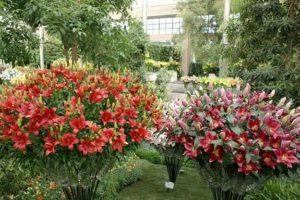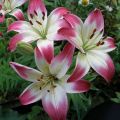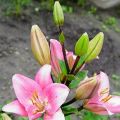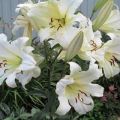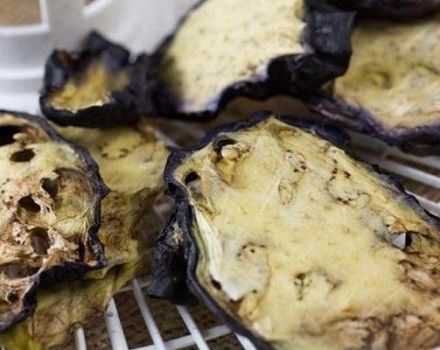Description of varieties of Asian lily, planting and care in the open field
People's love for lilies began in ancient times and has not waned for many centuries. Among the several thousand varieties and types of liliaceae, the most popular and in demand are Asian ones. Summer residents appreciate these flowers for their beauty, originality of colors and shapes, and unpretentiousness. Consider the features of growing Asian lilies, as well as the most popular and original varieties.
Description and characteristics of Asiatic lilies
Asian varieties are the best choice for planting in Russia. They were obtained by crossing species accustomed to life in conditions of continental temperature changes, severe frosts, and low humidity.
Advantages of Asians:
- winter hardiness, do not require shelter and mulching;
- low requirements for soil quality;
- early flowering;
- easily propagate by dividing bulbs and bulbs.
Many people attribute the lack of smell to the advantages; flowers are used without restriction in bouquets.
Almost half of all lily varieties are Asian. Florists have plenty to choose from to decorate the site and grow original exquisite lilies.
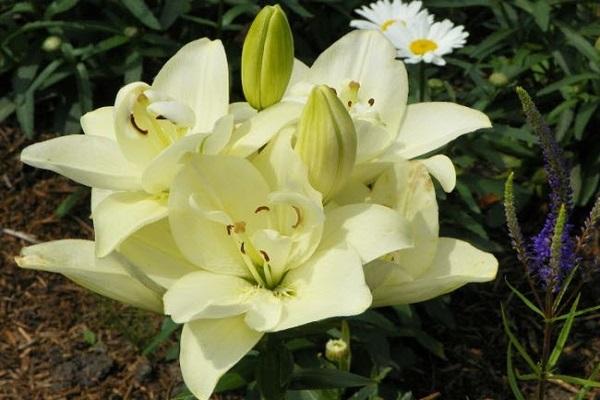
Varieties of varieties
In the middle of the 20th century, active breeding work with lilies began, since then several hundred hybrids have appeared annually, most of which are Asian. The main groups and the best hybrids are described below.
Pixie
The pixie group includes lilies with a shortened stem that does not exceed 35-40 centimeters. Such flowers look good in flower beds among other plants, they are planted in pots for apartments, they are used less often in bouquets. Let's mark the best varieties:
- Orange Pixie;
- Ivory Pixie;
- Red Pixie;
- Crimson Pixie.
Having found the word "pixie" on the package of bulbs, you need to understand that the plant will be short, but this will not affect the size of the flowers.
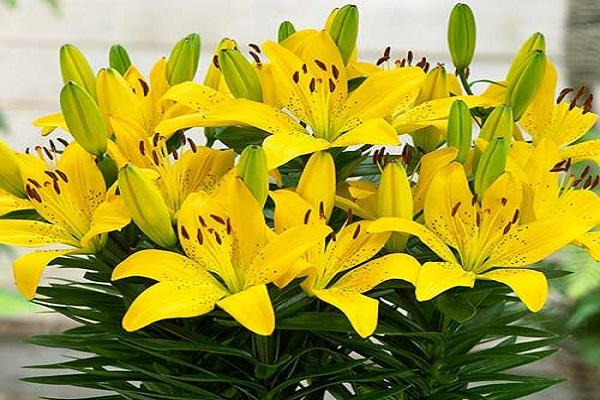
Tango
The varieties of the Tango group are among the most popular among summer residents. The lily petals are decorated with specks of a different tone grouped in the center. With a large mottling, part of the petal turns out to be painted in a contrasting color, which makes the lily bright and expressive.
The best Tango varieties are Lion Hart, Ocean Breeze, Tezire, Tribal Dance.
Marlene
One of the most popular types of Asiatic lilies. This variety is more prone to fasciation than others.With good care, regular watering and feeding, the stem grows thicker, up to 100 buds are formed on it instead of 10-15.
Lilies are pale pink in color, grow up to 15 centimeters. When fasciated, the plant turns into a huge bouquet of exquisite flowers.
Elodie
A pale pink delicate lily with a slight doubleness, light stamens. It gives the impression of a light airy flower. On the stem - 7-10 buds, when blooming reaches 15-17 centimeters in diameter.

Bicolor
It is difficult to identify the main color in flowers of this group. 2-3 colors blend smoothly and harmoniously into one another. Many people love this particular type of Asiatic lily. The best representatives are Assennyaya Farby, Sorbet.
Reference: Pot-lilies are hybrids for growing in pots, with a low bush, convenient for limited room space.
Brashmark
Lilies are called brashmarks, which have spots on the petals in the form of a careless brushstroke of a different color. The severity of the spots depends on the weather conditions; they can be bright and noticeable or less contrasting.
Representatives of brushmarks are loved by flower growers for their expressive appearance and brightness.
Or me
The flowers are creamy white. Near the center - a smear of yellow-brown tone, stamens of the same color.
With a large number of dressings, Elijah is capable of fasciating, although not as often as Marlene.
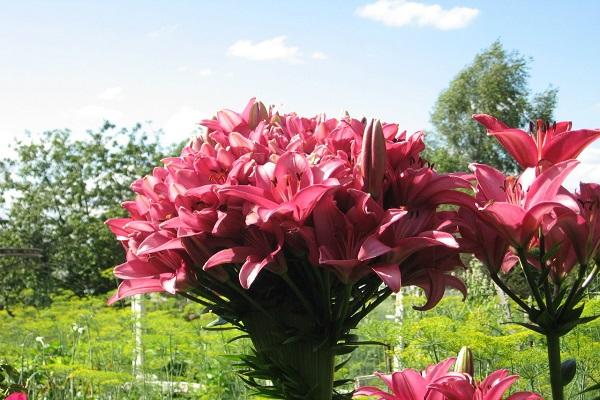
Delta
A variety with a long flowering period - 2-3 weeks. The petals have an expressive yellow color, the stroke in the center is brown, more saturated inside and paler towards the edge.
Zhuravinka
Zhuravinka - petals of exquisite red color with a darker pattern, the stamens are not noticeable, since they are painted in the same tone.
Lollipop
Lily Lollypop is a pink and white flower garden decoration. The snow-white middle with small specks is complemented by the edges of the petals painted in hot pink. In the inflorescence - 3-5 flowers, similar in shape to the stars. They look festive on the lawn, look good in a bouquet.
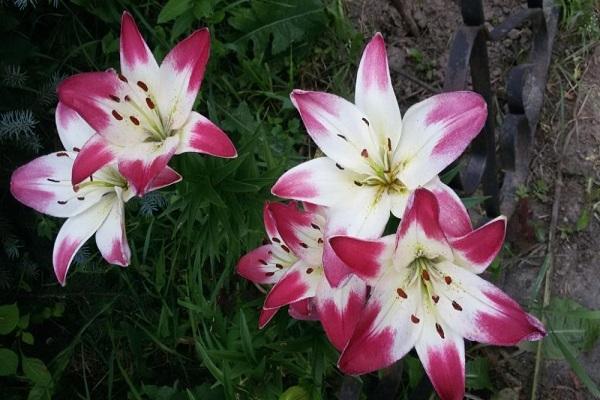
Golden stone
Representative of the wonderful Tango group. Deep yellow flowers with numerous specks of brownish-red color. Mottling covers the center and edges of the petals. It is often used in cutting because of the high decorativeness of flowers.
Asian red
Detroit is a lily with bright red petals that look like stars, sometimes in the middle of the bowl, light touches of orange hue. Stem - 90-120 centimeters, inflorescence - 5-7 flowers.
Prominens - large bowls of red tone, up to 17 centimeters in diameter. It is odorless, used in bouquets, keeping freshness for up to 2 weeks.
Navona
Lovers of classic lilies should pay attention to Navona - the flowers are snow-white, the middle is slightly greenish. The flower is strongly open, the petals move back a little. On the stem there are 6-12 buds.
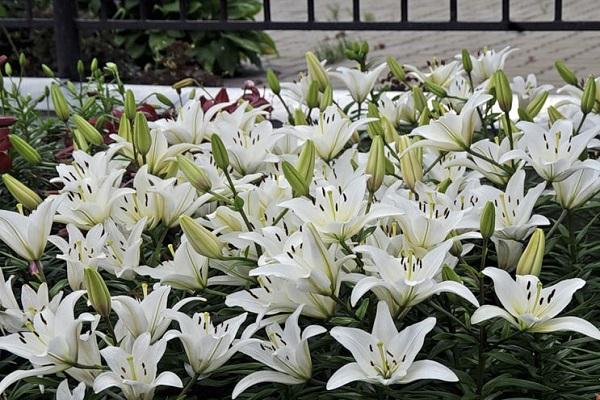
Asian mix
To decorate the flower bed with a multicolored combination of lilies, flower growers are helped by a group of bulbs, which are sold under the name "Asian mix". This is a set for planting hybrids of different colors. They have an equally high stem, brightly colored buds, combined in the shape and size of the bowl.
Mystery Dream
Possesses dense terry, the petals are tightly compressed, narrow, open gradually. The color is pale green. Dissolves in separate rows - central petals with burgundy spots. Becomes terry in the second year. Diameter at full disclosure is 15-18 centimeters.
Asian mapira
Lovers of gloomy, dark flowers will appreciate Mapira. The wide open flowers are burgundy and are refreshed by orange stamens. The stem stretches up to 120 centimeters, the number of buds is 5-15.
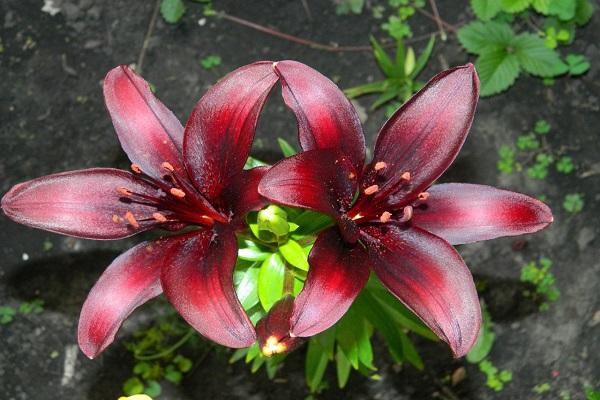
Asian party
The dark orange color of the petals towards the center turns into burgundy-cherry. Flowers - bright, noticeable, very different in tone from the usual color of flower beds. The petals are strongly open, the diameter is 20 centimeters, the stem is 110.
Pieton
The petals are cheerful yellow, with strokes and specks of a dark cherry hue. Against the backdrop of greenery, they look festive and fresh. The stem grows up to 110 centimeters, flowers - up to 17. Flowering - June-July.
Asian Terry Aphrodite
A delicate pink flower with pointed petals, in a double flower all the petals are clearly visible, the stamens are light. Inflorescence - 20-30 pieces. The stem grows up to 110 centimeters.

Patricia Pride
A bright flower of exquisite appearance. The pale yellow petals closer to the center have bright burgundy spots with a pointed edge, the center is yellow with burgundy specks. The size of the rosette is 14-16 centimeters, the stem is 60 centimeters.
Pearl ay
A lily of deep pink color with a burgundy-black center. The flower is wide open (16 centimeters) - the shape of a star, looks great on the lawn and in the cut. Has no smell. The stem is strong - 110 centimeters.
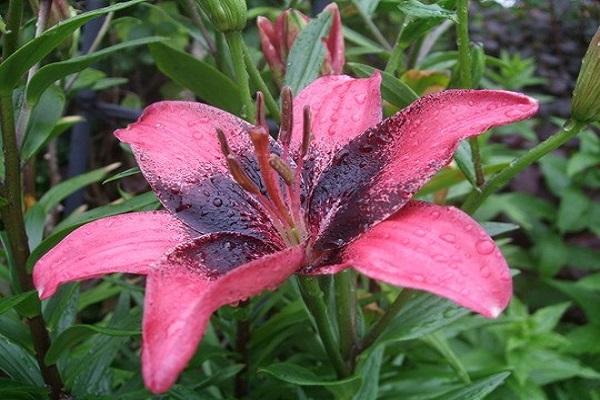
How to grow a flower correctly
Asiatic lilies are undemanding plants, they are easy to please. There are a few basic rules to follow to ensure the correct planting site and proper care.
Choosing a landing site
In one place lilies grow for 3-4 years, these are perennial plants. In the process of life, they form children, throw seeds and bulbs, as a result, the site is covered with young shoots. The bulbs need to be dug up and transferred to another location to ensure proper plant nutrition.
When planting, it is important to take into account the height of the stem, so as not to shade or cover neighboring plants, to form a picturesque group of lilies and other flowers.
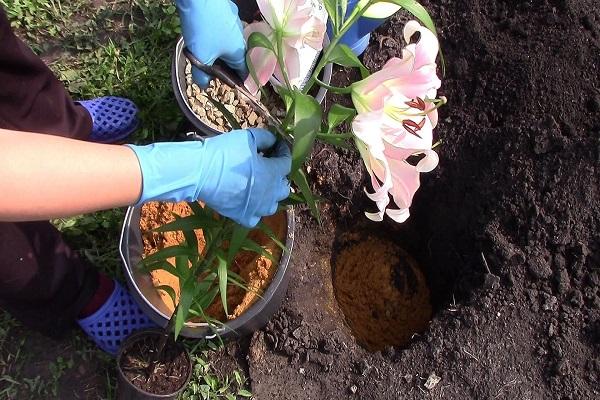
Lighting and location
For full growth and flowering, lilies require a sunlit area, temporary partial shade is allowed. In darkened places, the stems are looking for the sun - they are bent and thinner, the flowers are smaller and poorly colored.
For planting, a site with good drainage is chosen, in which water does not stagnate and puddles do not form. Lilies grow in one place for 3-4 years, you need to choose a planting site carefully.
Temperature
Asian hybrids easily tolerate all temperature fluctuations throughout the year, this is their main advantage.
Asians endure winter frosts steadily, if special conditions are specified for this variety, the soil is mulched, covered. It is also useful to do this in severe frosts and in the absence of snow.
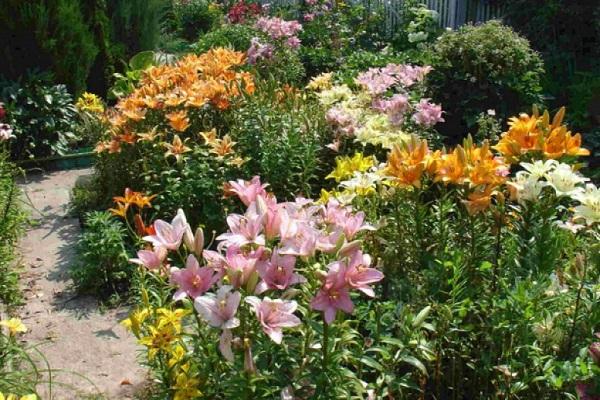
Air and humidity
Bulbous crops tolerate lack of moisture more easily than excess. The site and the soil must be ventilated; when puddles form, water is removed. Watering is regular, as the soil dries out, but without excessive moisture.
For planting, a ventilated area is chosen, without air stagnation and strong winds.
Priming
Plants grow well in slightly acidic and neutral soils, do not like calcareous. Clayy heavy soils cause rotting of the bulbs, the soil is lightened before planting with humus from the coniferous forest.

Bulbs storage rules and their preparation for planting
If it is impossible to plant lilies right away, the bulbs are stored at temperatures above 0 ° - in sand, peat or covered with dry grass or moss. Some keep planting material in the refrigerator, in ventilated bags.
Before planting, the bulbs are cleaned of damaged scales, rot, exfoliation. Treated with a solution of fungicide, Karbofos or potassium permanganate.
Timing
Most flower growers believe that lilies can be planted at any time, but spring and autumn are considered the best for plant development:
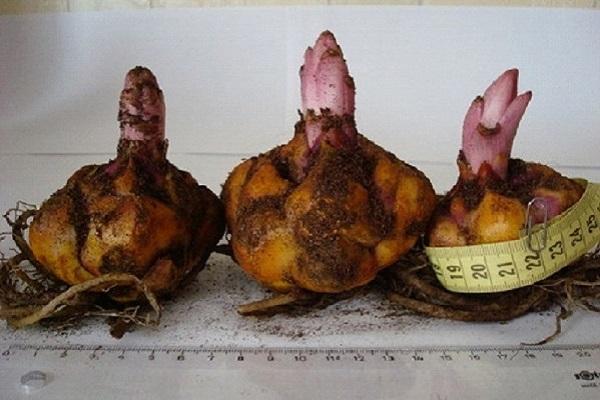
- Spring. The bulbs do not rot, they take root better. You should not count on abundant flowering this year. They are planted when the snow has melted and the soil has warmed up. In different regions - the end of March, April.
- Fall. The bulbs have time to take root, bloom well the next year. Planting - 1.5 months after flowering, August-September.
At any time of planting, it is important to prepare the soil, mulch and cover young plants for the winter.
Planting process
Having chosen a site, they dig up the earth on a full bayonet of a shovel. Sand, well-rotted compost or manure is placed on the bottom of the holes.
The distance between the bulbs is 35-40 centimeters. Installation depth of the bulbs:
- large - 20-25 centimeters;
- medium - 15 centimeters;
- small - 10.
The depth of the laying is corrected according to the type of soil - in heavy ones they are planted a little closer to the surface. Immediately after planting in the open ground, lilies are watered abundantly.
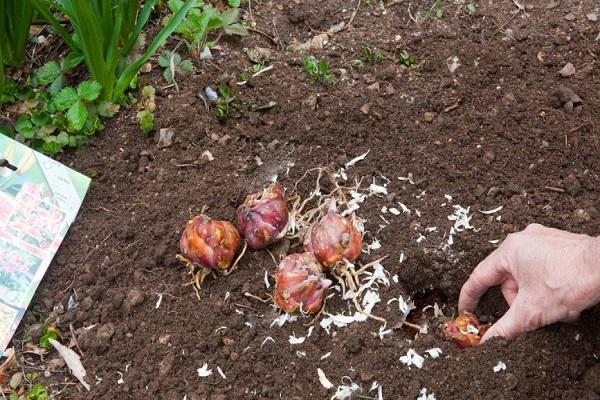
Plant care rules
Growing lilies does not bring much trouble.
Watering
In hot dry weather, the plants are watered 2-3 times a week so that the water sinks to the bulbs, that is, abundant watering. In cool weather with cloudy weather, one watering a week is enough to prevent rotting of the bulbs.
When the top layer dries up, the soil is loosened, if moisture remains inside, watering can be postponed.
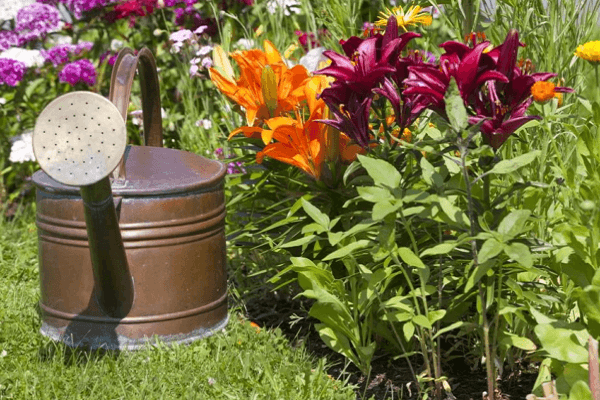
Top dressing
Full flowering and the formation of the maximum number of buds are ensured by timely feeding. It is held three times per season:
- when snow melts - nitrogen, manure;
- with the formation of buds - potassium, phosphorus;
- end of summer - nitrogen-free fertilizers.
When budding, they are fed until coloration appears.
Pinching, pinching, pruning
The lily bush is not specially formed, the pinching is not carried out. After the end of flowering, the remains of the ovary are cut off in uncut flowers and the stem is expected to dry out on its own.
Some growers remove the bulbs so that they do not take away the strength from the flower. The stem is cut when dry.
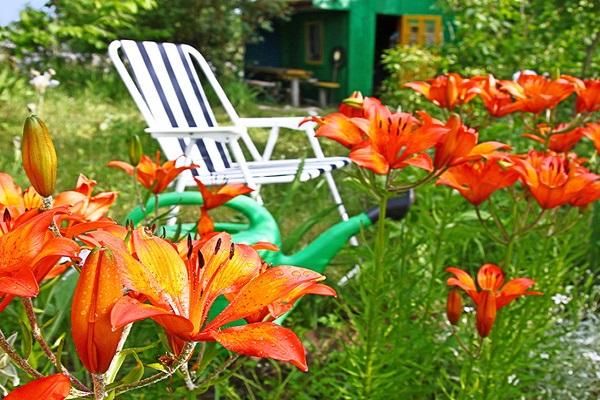
Transfer
After 3-4 years, the lilies are transferred to another site. Daughter bulbs germinate, dense shoots of young growth are formed around adult plants, interfering with each other. Excavation, revision of planting material, transfer of plants to another place is required.
If a hybrid requires more frequent replanting, this is reported by the manufacturer on the bulb packaging.

Diseases and pests
Lilies suffer from fungal diseases in highly moist and heavy soils. More often than other plants affect:
- Rust. Brown spots are formed on the leaves and stems, spreading to the buds and flowers. It is necessary to treat with Fundazol and remove the plant in case of severe damage, so as not to infect other flowers.
- Fusarium affects the bulbs. It is difficult to cure them, usually the plant is dug up and burned. Adjacent bushes are treated with fungicides.
- Gray rot (botrytis). A fungal infection that affects the terrestrial part.
Insects harm the bulbs and green parts. The most common plants infect: red lily beetle, aphids, onion and lily flies. The bulbs are eaten by the bear and its larvae, the wireworm. Appropriate insecticides are selected for plant treatment.

How to prepare for winter?
All Asian species show an enviable winter hardiness. Only transplanted lilies need insulation. They are covered with mulch, a layer of sawdust or spruce branches. In spring, the shelter is removed immediately after the snow melts, before the shoots grow.
Lilies of Asian varieties are a real find for the not too experienced and hardworking gardener. Often, having planted plants, they simply forget about them, Asians bloom steadily and magnificently for 5-6 years. With good care, these flowers are striking in size, brightness of colors, exquisite shapes and beauty.

